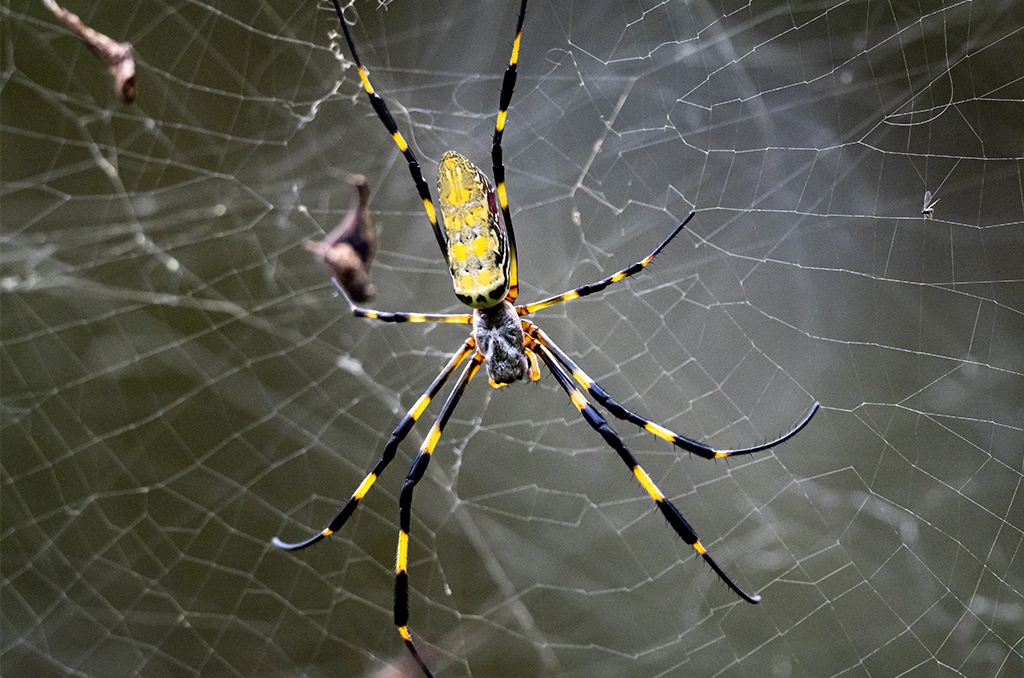Joro spider, a type of orb-weaver spider native to Japan — Courtesy: Shutterstock — Dave Hansche
Americans living on the East Coast may soon find themselves facing an invasion of giant flying spiders. Large enough to cover the palm of your hand, the Joro spider is quite intimidating.
But will these creatures pose a problem as they continue to make their way throughout the eastern U.S., or will they simply be a colorful new addition to the East Coast’s diverse catalog of insects?
The Joro (Trichonephila clavata) is part of a group of spiders known as orb weavers due to their perfectly organized, wheel-shaped webs. Joro females have bright colorful yellow, red, and blue markings on their bulbous bodies and can measure three inches across when their legs are fully extended. Their large size makes them comparable to the Carolina Wolf Spider, which is the biggest wolf spider in the country. The Joro is an invasive species that is currently settled in Georgia, likely after it hitchhiked on a cargo ship from Asia.
“In their native range, in east Asia and Japan, they do go pretty far south in some tropical climates,” Andy Davis said.
The species has a 77% higher heart rate, double the metabolism, and can survive a brief freeze that easily kills off its relatives. The Joro spider appears much better suited to colder temperatures than other related species.
At the University of Georgia, Davis studied the Joro and believes that while it has been in Georgia for nearly nine years now, it may likely spread its range north and south, including Florida as soon as this spring.
However, there’s no need to worry. Although their impact on the environment and other native species remains unknown, researchers believe they are benign.
Many ask, ‘are Joro spiders dangerous?’ Only if you’re a tiny insect, such as a brown stink bug or mosquito. While the spiders do use venom to hunt, their bites are not harmful to humans. If a Joro were to bite a pet or human, their fangs are believed to be too small to break the skin.
“These Joros are really wimpy. They’re more likely to run away than attack anybody. And even if they wanted to, their fangs are so short, they likely couldn’t do any damage,” Davis said.
Some people are probably saying out loud, ‘we already have those here!’ The Joro spider is very similar to the Banana spider which is also a no-risk critter unless you unintentionally walk into a web. The Joro spider carries that same risk which is more of a nuisance if anything.
“You can have three or four webs, all meshed together which makes a big super web, so that can be kind of a nuisance to homeowners,” Davis said.
Joros are also known to parachute into the air. Baby spiders send out a thin web and are carried off by the wind. This may be how they make their way down to the Sunshine State.
“At some point, we may find out these spiders get eaten by our native birds which then might be a food source,” Davis said.
Are you interested in Florida’s nature? For stories like this and much more: Florida Insider is dedicated to educating, entertaining and informing its readers about everything Florida. Easy to read content at the palm of your hands and covering the stories that matter.

